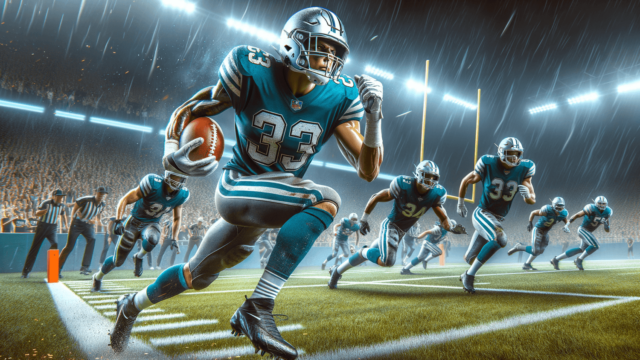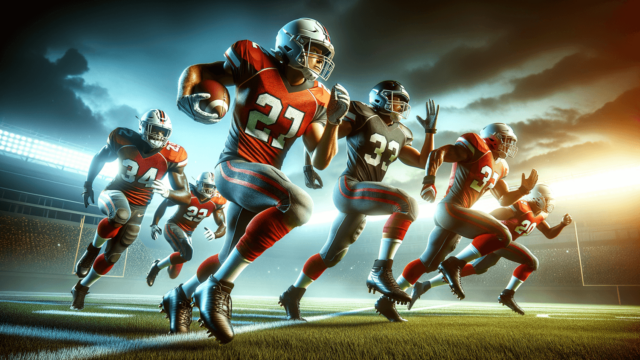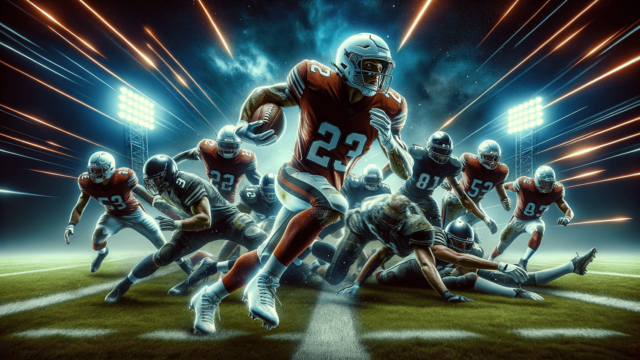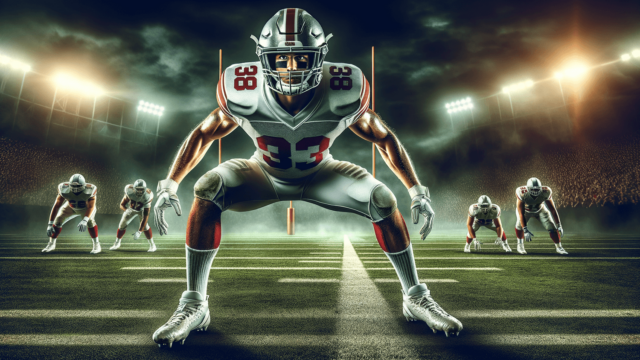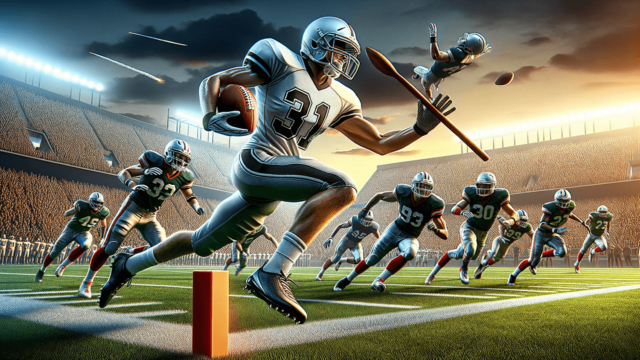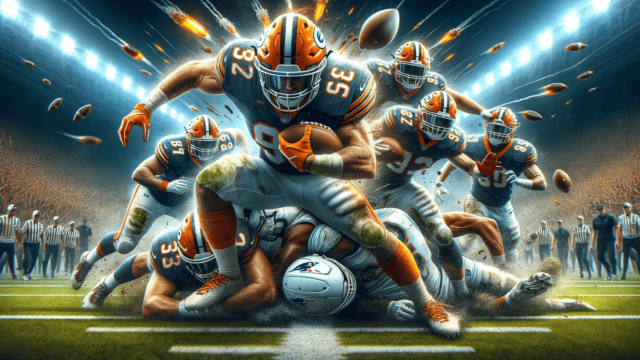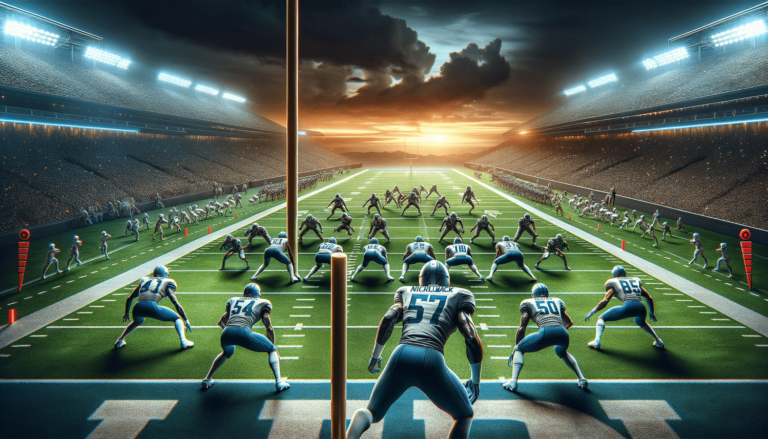
A Nickelback in football is a fifth defensive back added to the defensive lineup to provide extra pass coverage. They primarily defend against multiple-receiver formations and often replace a linebacker, resulting in better agility and speed on the field.
Understanding the Nickelback Position
A Nickelback in football is a fifth defensive back added to the defensive lineup to provide additional pass coverage. This player typically has the speed and agility fitting for handling opposing receivers and tight ends. The role of a Nickelback becomes essential when facing teams with strong passing attacks, offering extra support against multiple-receiver formations.
Role and Responsibilities of a Nickelback
The primary responsibility of a Nickelback is to cover additional wide receivers or tight ends, opposite the team’s starting cornerbacks and safeties. Nickelbacks must possess remarkable speed and agility to keep up with quick, agile receivers. Moreover, they should be strong and accurate tacklers, occasionally providing assistance in the run defense.
Replacing a Linebacker
The Nickelback often replaces a linebacker in the defensive lineup, resulting in a smaller but faster configuration known as the Nickel defense. This setup has five defensive backs, usually consisting of three cornerbacks and two safeties. The purpose is to counteract the additional receivers and increase the pass coverage ability of the defense. This change sacrifices some run defense, but, in turn, offers better flexibility and mobility on the field.
Impact on Defensive Strategy
The inclusion of a Nickelback significantly impacts the overall defensive strategy. As they focus on defending against passing plays, this allows the rest of the defensive unit to concentrate on stopping the run. The Nickelback must possess a high football IQ to read plays, make quick decisions, and react appropriately to a fast-paced offense. In essence, the Nickelback’s role strengthens and solidifies the defensive formation against both passing and running plays.
Famous Nickelbacks in NFL History
While not as celebrated as dominant cornerbacks or safeties, certain NFL players have made significant impacts as Nickelbacks. Throughout the years, these athletes have contributed to the success of their respective teams’ defenses.
Ronnie Lott
Ronnie Lott, a Hall of Fame defensive back, spent his career with teams like the San Francisco 49ers, Los Angeles Raiders, and New York Jets. Lott’s versatility granted him the ability to play both cornerback and safety positions, including Nickelback. He became an essential asset to his teams and is considered one of the greatest defensive players in NFL history.
Tyrann Mathieu
Tyrann Mathieu, nicknamed the ‘Honey Badger,’ is known for his extraordinary skills when covering receivers in the slot and outplaying opponents as a Nickelback. Being currently active in the NFL, he has earned numerous accolades, such as Pro Bowl selections and All-Pro honors, thanks to his fearless tackling, quick decision-making, and incredible playmaking ability.
Related Roles and Formations in Football
Alongside the Nickelback position, football showcases a variety of roles and formations intended to counteract offensive threats. Understanding these roles and formations can better appreciate the complexity of the sport.
Dimeback and Dime Defense
The Dimeback, similarly to the Nickelback, is an additional defensive back brought in to strengthen pass coverage. However, the Dimeback is the sixth defensive back in the formation, functioning in an even more pass-heavy defensive setup known as the Dime defense. This formation typically involves four cornerbacks and two safeties, further bolstering pass coverage against offenses with an abundance of talented receivers.
Big Nickel Defense
The Big Nickel defense is a variation of the traditional Nickel defense that focuses on countering dual-threat tight ends. In this formation, a strong safety, who is typically more adept at handling larger receivers, replaces a linebacker instead of a cornerback. This defensive setup offers a balanced blend of size and speed, making it suitable for defending against both passing and running plays featuring versatile offensive weapons.
FAQ: Common Questions about Nickelbacks in Football
After learning about the Nickelback in football, you may have more questions. To help deepen your understanding of the role, we have curated a list of frequently asked questions that directly relate to the Nickelback position and its associated topics.
How does the Nickelback help against the run game?
The Nickelback contributes to stopping the run game by using their speed and agility to close gaps or catch up to running backs. Although primarily focused on pass defense, they must be versatile and capable of tackling or providing run support when needed.
Why is it called a ‘Nickel’ defense?
The term ‘Nickel’ defense comes from the fact that there are five defensive backs in this formation, with the Nickelback being the fifth addition. The name is derived from the U.S. five-cent coin, called a ‘nickel,’ which signifies the inclusion of the fifth defensive back.
Can safeties also be used as Nickelbacks?
Yes, safeties can be utilized as Nickelbacks. In fact, certain players excel at both safety and Nickelback positions due to their versatility, speed, and ability to cover receivers. This helps to strengthen the defense against various offensive threats.
What are the key skills a Nickelback should possess?
A Nickelback should have exceptional speed, agility, and quick reflexes to cover additional receivers effectively. Additionally, they must be strong tacklers to contribute to run support and possess high football IQ for reading plays, reacting appropriately, and maintaining composure in high-pressure situations.
Are the Nickelback and Dimeback always in the game?
Nickelbacks and Dimebacks are not always in the game. Their presence depends on the offensive formation and the defensive strategy tailored to counter it. Usually, they are brought in when the opposition emphasizes a pass-heavy approach or makes use of multiple-receiver sets.
Featured Posts
- No pillar pages found.
